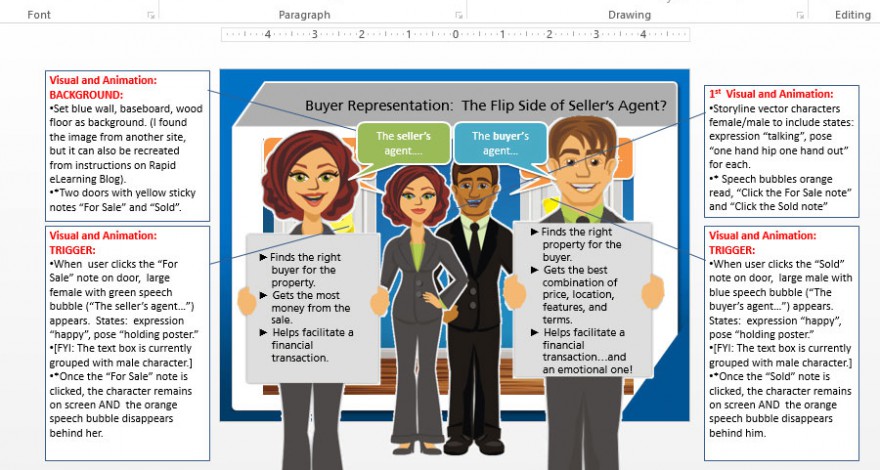This week I participated in two #ASTD chapter events, both on using templates and storyboards. While I have been doing instructional design for a long time, I always attend these types of activities because if I can learn one new thing that will make me more productive, it is well worth my time.
Our work typically is on the eLearning development end of things. And I am in complete agreement that storyboarding is a step that can’t be missed. It forces you to plan, sequence, and apply a consistent approach to laying out the content that not only you can interpret, but has enough detail to pass along to your client/customer and developer. It communicates the flow, accuracy, and treatment of the content.
However, our team has really moved to doing all of our storyboards in PowerPoint. We have moved away from the traditional Word storyboards. We find that we can communicate our ideas better to our clients (especially if they are new to eLearning), get better feedback from SMEs, and develop faster because it all imports into our tool of choice #Storyline. I really thought that many eLearning instructional designers used a similar approach.
However, maybe not? I am curious what other IDs out there use for their storyboards. Let us know.
Here is a sample of one slide of our storyboard template


